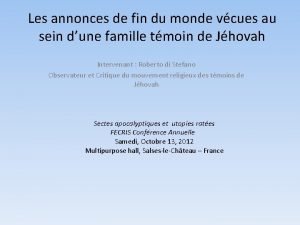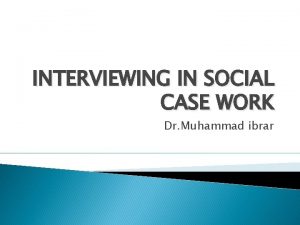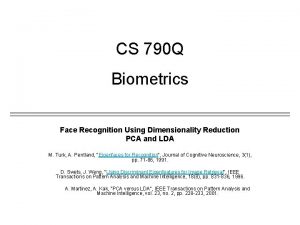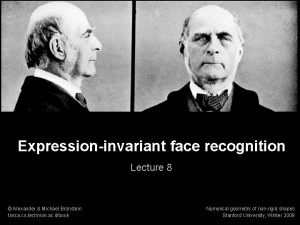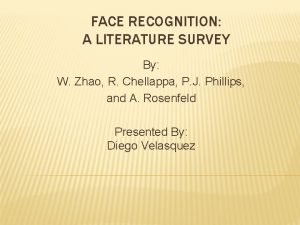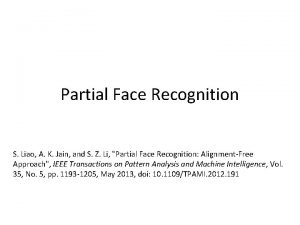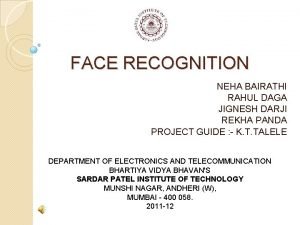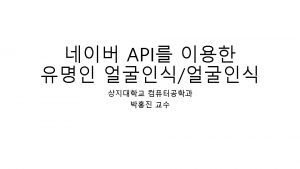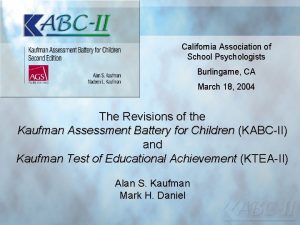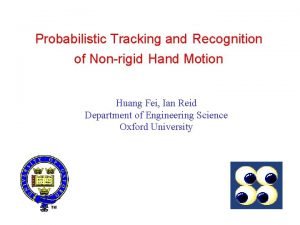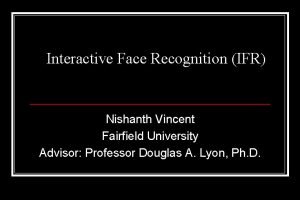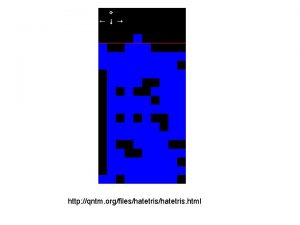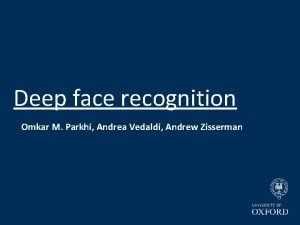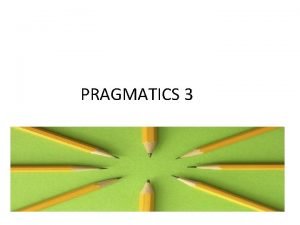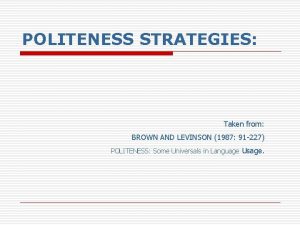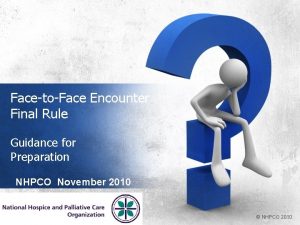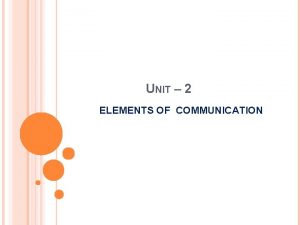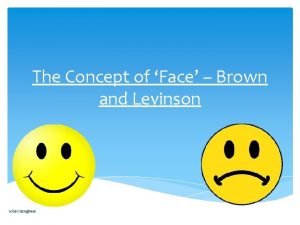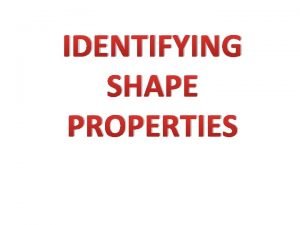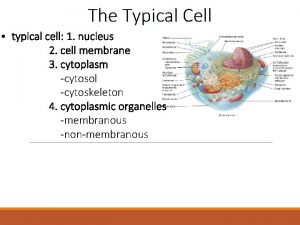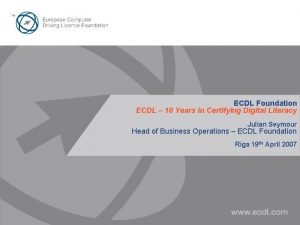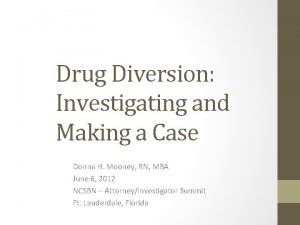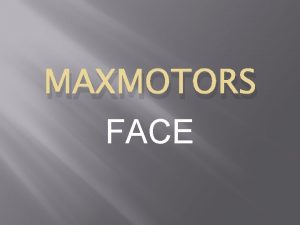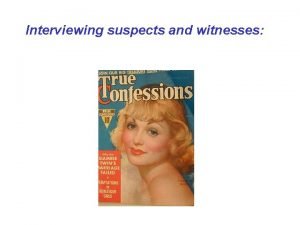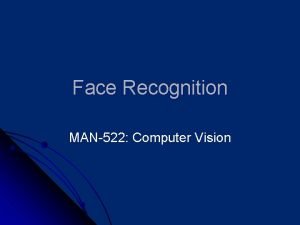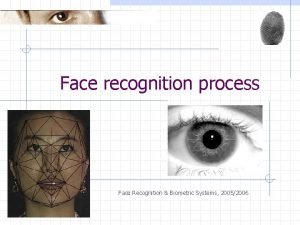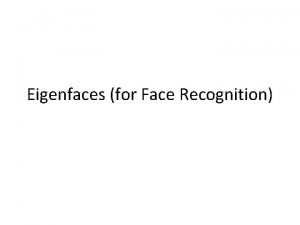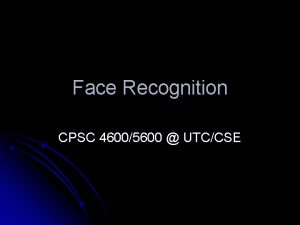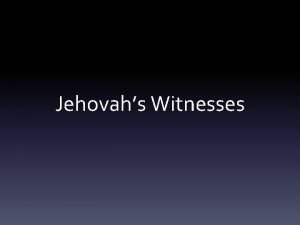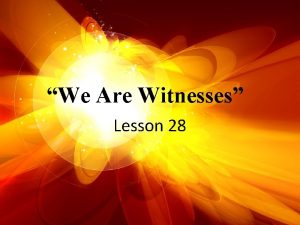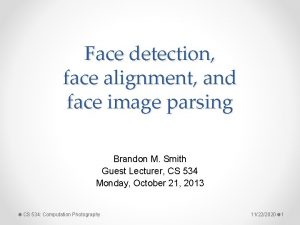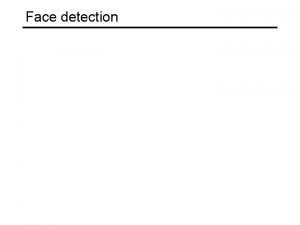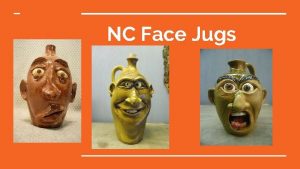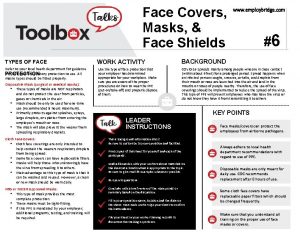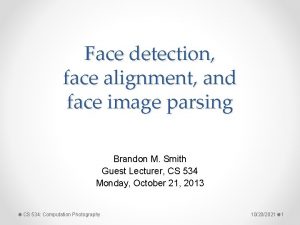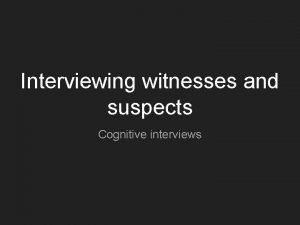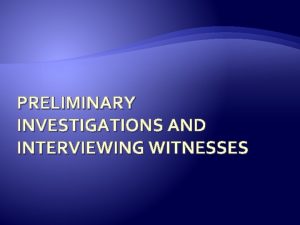MAKING A CASE Interviewing Witnesses FACE RECOGNITION Look










































- Slides: 42

MAKING A CASE Interviewing Witnesses: FACE RECOGNITION

Look closely

1 5 2 6 3 7 4 8

Radovan Karadzic l Trying to evade capture for war crimes in Bosnia he let his hair grow and wore spectacles. He was able to live and work for 12 years in his country unrecognised even though he had been their leader!

Change of appearance Recognition of faces is poor if the face changes between the encoding and the presentation of possibilities. l This could be a change in glasses, hairstyle, beard or even expression. l

Studies of face recognition l l l Patterson and Baddeley (1977) compared the accuracy of recall of a face that had changed in some way between the first and second time the participants saw it. The accuracy of face recall is influenced by: length of time since the face was seen the seriousness of crime the number of previous encounters with the suspect witness characteristics (like attention to detail).

Case study: l George Ince was a known gangland armed robber with links to the Kray brothers. In 1972 he was tried for a murder in a case that rested almost entirely on identification evidence. The witnesses were the husband daughter of the murdered women who saw the attacker for at least 20 minutes. The daughter identified Ince from an ID parade, but it later transpired that she had earlier been shown his picture contravening the 1969 regulations for the conduct of ID parades. In 1974 after 2 trials Ince was discharged as he was able to produce an alibi. This case highlights the issues that arise with the investigative process & opens up some areas for investigation

Photo fits l l l Photo fits were first introduced in the UK in 1970 They involve trained operators selecting alternatives for specific facial features to match a witness’s verbal description, until they have produced a likeness.

Accuracy of Photo fits This photo fit of Peter Sutcliffe (the Yorkshire Ripper) was given by one of the women he raped l The picture on the right is a photograph of him taken shortly before his arrest l

Advantages & Disadvantages: Been found to be û Christie & Ellis found very accurate in to be less accurate many cases than verbal descriptions ü Use own memory not multiple choice ü

Mugshots l l When witnesses experience problems recalling faces they may be presented with a ‘mugshot file’ a collection of photos of people already known to the police, on the assumption that these photos may act as a prompt.

Advantages & Disadvantages: May help prompt memory / description as features ü Can save time if suspect already know to the police ü Feel under pressure to choose even if not confident û Static picture not the same as live û

Show ups A show-up is the presentation of a photo of one suspect for the witness to identify l This is the least satisfactory form of identification. l l DISADVANTAGES: l l May be led to believe the police are very confident Yarmy found only 57% of people where able to identify someone from 2 mins earlier

Photospreads A photospread is more effective than a show –up, as it involves the presentation of at least 12 faces all resembling the suspect. l Photospreads would tend to be used in situations where the police have a suspect in mind, but need a witness to confirm the identification. l A typical procedure would involve a witness viewing an array of perhaps twelve photographs and being asked if they recognised anyone in the array. If the witness indicated that they did recognise anyone then they should be asked to say which photograph they recognise and from where. l

Advantages & Disadvantages: Fairer than a show up ü Suitable for young nervous witnesses ü Static photos û Multiple choice affect û Appearance of foils may reduce functional size û

Identification Parades (Line Ups) Perhaps the best-known type of formal identification process is the identification (or ID) parade. l A suspect stands among a number of innocent foils and a witness is asked to inspect the parade and then to decide whether the perpetrator is present. l

Advantages & Disadvantages: ü Live better than photo Multiple choice affect û Appearance of foils may reduce functional size û Distressing for witnesses û Behaviour (i. e. nervousness) of suspect = easier to identify û

Face recognition Without conferring – write down the names of the following twelve celebrities.

Condition A 1 2 3 4

Condition A 5 6 7 8

Condition A 9 10 11 12

Answers - A 1 Amanda Holden 2 Brad Pitt 3 4 Katie Price David (Jordan) Tennant 5 Gordon Brown 6 Cheryl Cole 7 Johnny Depp 8 Lindsay Lohan 9 Mylene Klass 10 Peter Andre 11 Nicole Kidman 12 Simon Cowell

Condition B 1 2 3 4

Condition B 5 6 7 8

Condition B 9 10 11 12

Answers - B 1 Peter Andre 2 Mylene Klass 3 Simon Cowell 4 Nicole Kidman 5 Cheryl Cole 6 Gordon Brown 7 Lindsay Lohan 8 Johnny Depp 9 Brad Pitt 10 Amanda Holden 11 David Tennant 12 Katie Price (Jordon)

Results l People find it easier to recognise the top half of the face, rather than the bottom half. l Why do you think this is?


True or False 1 l You need to know 5 aids to recall l We are better at remembering faces then snowflakes and inkblots l Photo fits were first used in the UK in 1980 l 2 types of photo fit system are Mac a Mug and Evofit l Mugshots are where one photo is given to a witness

True or False 2 l Mugshots lack ecological validity l Show ups are the least satisfactory form of identification l Only 57% of witnesses were able to accurately identify a person seen 2 mins earlier in a show up l At least 10 photos are used in a photospread l Photospreads and show ups are susceptible to the Multiple Choice Effect

True or False 3 l ID parades are more suitable than show ups for young and nervous witnesses l Cutler & Penrod did a study of a special kind of ID Parade called a sequential line up l Sequential line ups reduce the multiple choice effect l Most studies of photospreads use arrays which do not contain the target

True or False 4 l l l Photospreads need to be available in court Photospreads are live, ID Parades use photographs Defence council prefers foils who are different in appearance to the accused The behaviour of the accused may make him or her easy to distinguish from foils If a foil is picked out of an ID Parade they are arrested ID parades may be more stressful than the actual event according to anecdotal evidence

1. 2. 3. 4. 5. 6. 7. 8. Poor quality CCTV images are still recognisable Crimewatch etc broadcast appeals directly to people who know the suspect Implications for facial reconstruction/ e-fits for approach used Vital components for e-fit. Operators highly trained to extract relevant info If suspect is seen in poor or side light they may look very different therefore influencing testimony Facial reconstruction static – future developments needed Everyone seems to have the ability to recognise faces – implications for credibility of children as witnesses Implications for reconstructions which tend to be expressionless

Recognising and recreating faces by E-fit Key study: Bruce et al. (1988) Aim l To investigate the relative recognisability of internal and external features of a facial composite. Method l Three laboratory experiments.

BRUCE l RECOGNISING FACES l Internal and external features

l Internal l features: The region including the eyes, brows, nose & mouth l External l features: Head shape, hair & ears

Participants l 1 st Experiment – 30 staff and students from Stirling University, paid £ 2, 15 male, 15 female, mean age 29 l 2 nd Experiment – 48 undergraduates at Stirling University, all volunteers, 21 males 27 females l 3 rd Experiment – 8 staff and students from Computer Science and Psychology

Procedure: Experiment 1 The stimuli were target photographs of ten celebrities and 40 composite images produced by E-Fit, PRO-fit, Sketch and Evo. FIT. l Each face was clean shaven and spectacles were avoided. l Three sets of composites were used: ‘complete, ’ a set containing the internal features and another set containing the external features. l

Procedure: Experiment 1 (cont. ) l Participants were tested individually on one of the three conditions (independent measures design). l They were asked to place each composite in front of a celebrity face in their own time until the task was completed.

Experiment 2 This experiment used a photo array or photo line up with distracter faces or foils making the task more difficult. l The faces and foils were made easy (all very different) or hard (all very similar) to identify. l The composites were then presented one at a time along with the photo array and the participant had to pick out from the array the celebrity face which matched the composite. l As before, the composites were either of internal features or external features of the face. l

Results Experiment 1 l Whole composites and those of external features were sorted similarly at approximately 35% correct. The composites of internal features were only 19. 5% correct. Experiment 2 l Composites of external features (42%) were identified more easily than internal features (24%) and this was consistent across array type (whether easy or difficult). Experiment 3 l For both groups the external features were much better reproduced in the composites

Conclusions In experiments 1&2 participants performed just above chance with internal features on the tasks used. In all cases participants performed equally well with external features or whole faces l This could indicate that there is something about the internal features of a face which do not work well when trying to create a reconstruction. l This effect holds true even when the face is familiar which sheds some doubt on previous research. l
 Look left right
Look left right Jehovah's witnesses armageddon 2034
Jehovah's witnesses armageddon 2034 Addiction expert witness
Addiction expert witness Interview in social case work
Interview in social case work German motivational speech
German motivational speech Conclusion of face recognition
Conclusion of face recognition Face recognition
Face recognition Facial expression recognition
Facial expression recognition Face recognition a literature survey
Face recognition a literature survey Face recognition
Face recognition Face recognition
Face recognition Demystifying face recognition
Demystifying face recognition Clova face recognition
Clova face recognition Face recognition
Face recognition Face recognition literature review
Face recognition literature review Face recognition
Face recognition Face recognition
Face recognition Face recognition
Face recognition Face recognition
Face recognition Face recognition
Face recognition Omkar parkhi
Omkar parkhi Best worst and average case
Best worst and average case High considerateness style
High considerateness style Brown and levinson (1987)
Brown and levinson (1987) Face-to-face narrative examples
Face-to-face narrative examples Elements of face to face communication
Elements of face to face communication Barbara cons
Barbara cons Positive vs negative face
Positive vs negative face I have a flat face
I have a flat face Romeo and juliet written in 1595
Romeo and juliet written in 1595 Cis face and trans face
Cis face and trans face Myron b thompson academy
Myron b thompson academy Corso ecdl
Corso ecdl Face powder formulation
Face powder formulation Activity 1 picture
Activity 1 picture Look at activity 1 and write
Look at activity 1 and write Look at activity
Look at activity Policymaking process steps
Policymaking process steps Is making inference simply making a guess
Is making inference simply making a guess War making and state making as organized crime
War making and state making as organized crime Investigating and making a case for drug diversion
Investigating and making a case for drug diversion What is rolling with resistance
What is rolling with resistance Motivational interviewing
Motivational interviewing

